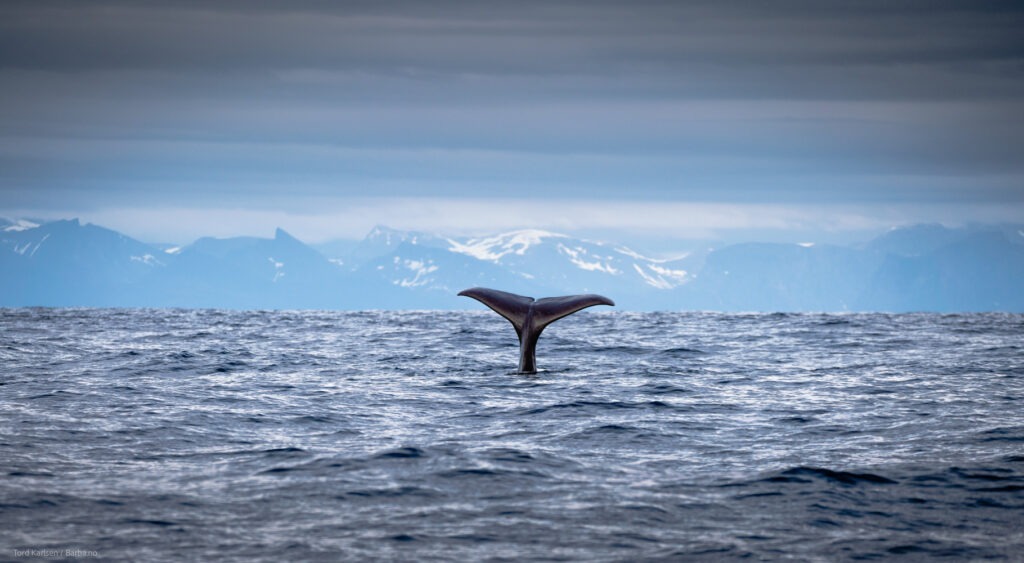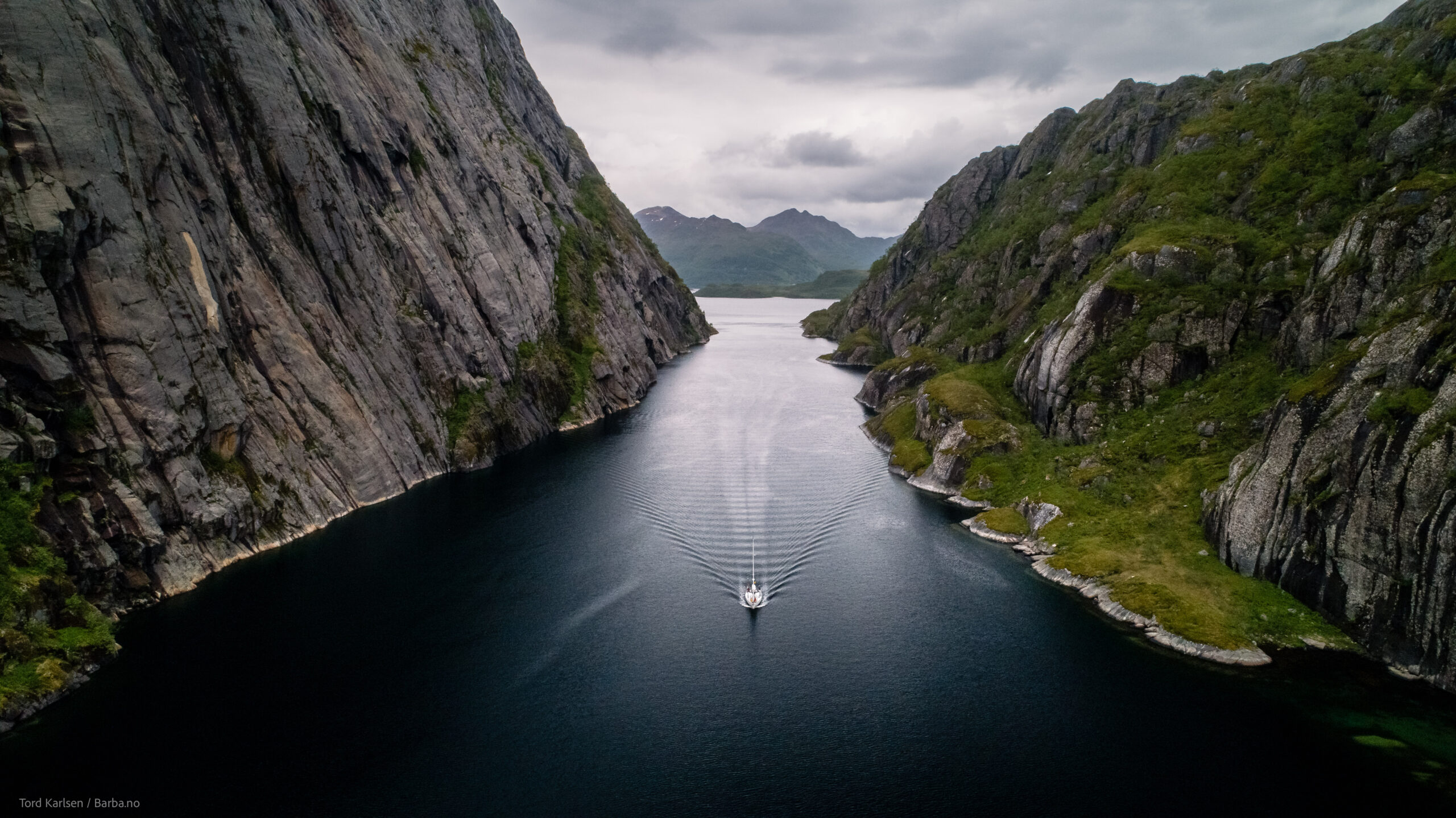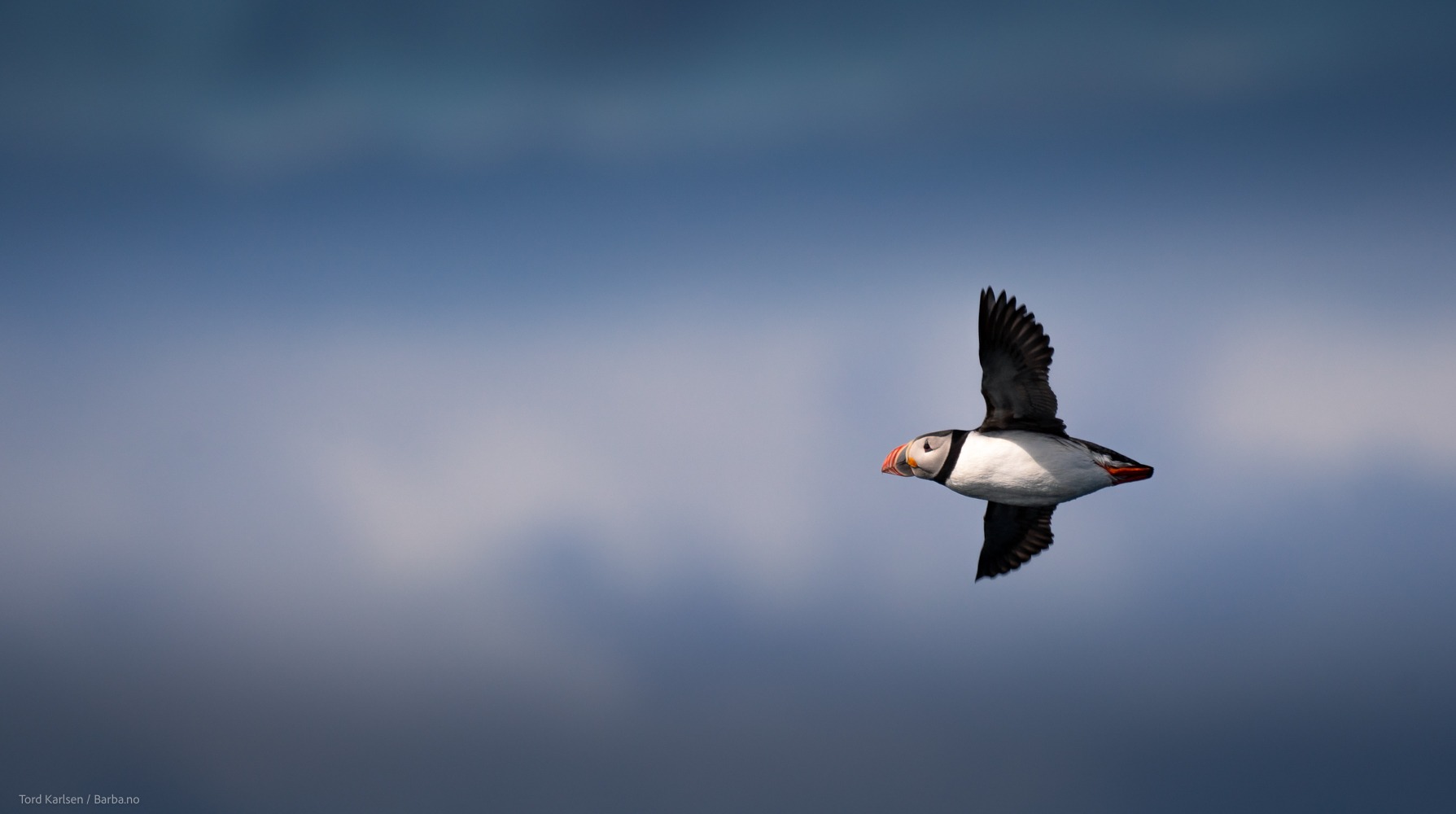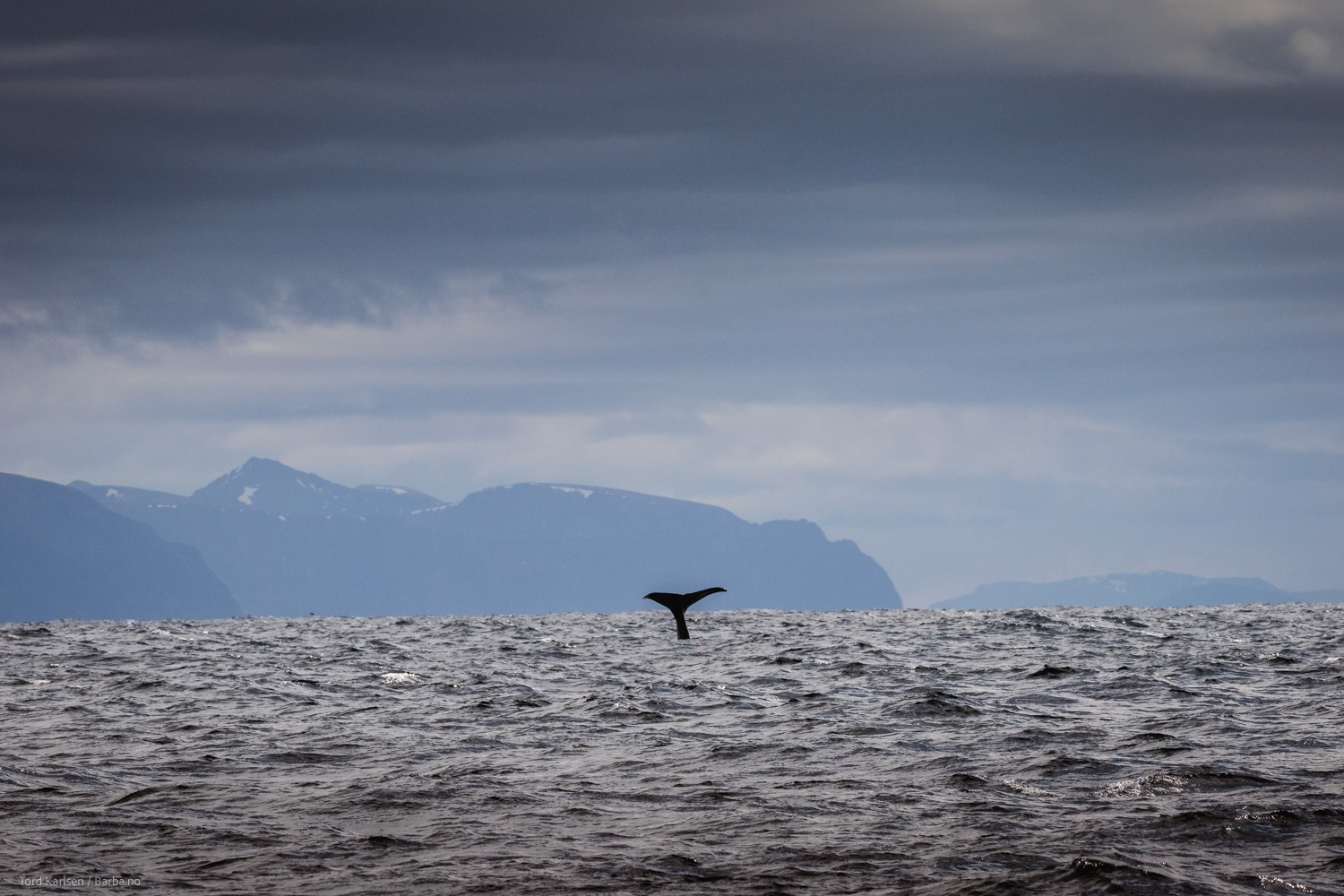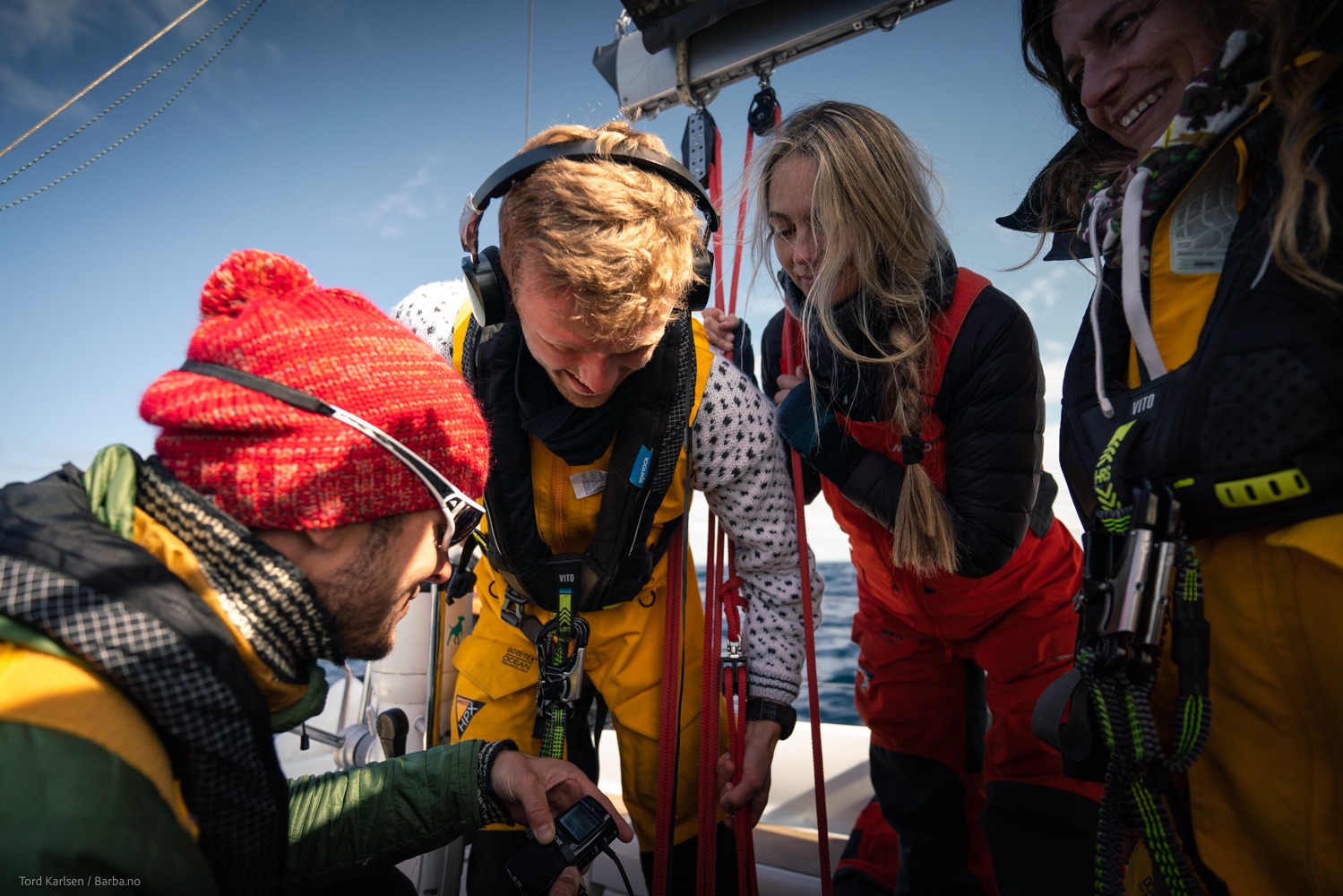Written by Giulia Ercolett, Aksel Engebraten Ørstavik and Tord Karlsen
Hello again from Barba!
We’re now in Tromsø, which means that the first leg of Arctic Sense 2021 is successfully done!
It’s been an amazing journey! We should start this blog post by saying a HUGE thank you to Marta and Kristine, who sadly had to head for land. The sail up the coast would not have been the same without them.
What this also means, is that now Aksel, Giulia and Tord are behind the writing board. Exciting stuff!
As mentioned on the last blog, the weather has been surreal. Flat seas and a warm sun made Giulia wonder if she ever left Italy. But be assured, with the slightest sign of wind, we hoisted both the main sail, and the green gennaker with the Barba dog. The feeling when the wind catches the sails and the engine is turned off never gets old. Suddenly it’s complete silence on board, and even the crew takes a momentarily break in conversation to enjoy this ancient way of travel.
Barba sailing through Trollfjorden. Photo by Tord Karlsen.
Being an active crew, it’s nice to stretch your legs every now and then. After a day and a half, we reached Alden, a beautiful island with an impressive mountain covering most of it. Of course, it had to be climbed. A good hike, until someone on the top realized their phone had fallen out of their pocket, and the hike down ended up as a search party. Luckily, the phone was found, and we got back on Barba to continue sailing.
We quickly got up to Helgelandscoast, and in Stokkvågen we picked up Tord/Tordi. He is a skilled photographer, seasoned barbarian, active hiker and a pleasure to have on the boat. Being the 6th crewmember on a boat with 5 beds, he spent the night on the couch. No worry, it’s the most comfortable couch along the coast, as Aksel can confirm after being the “new guy” last winter.
You normally wouldn’t expect too many whales up the Helgelandscoast, but suddenly an old friend of Andreas showed up – Hvaldimir. This white beluga whale showed up in Norwegian waters two years ago, wearing a Russian-marked harness. Even though it was super exciting, we all kept calm, and waited for him to approach us. It didn’t take too long before he swam around the boat, checking the propeller, biting the anchor chain, and poking his head out of the water looking at us. Barba is on a northbound mission, so after staying and enjoying his company for a while, we had to keep moving.
Barba crew’s encounter with Hvaldimir. Video by Tord Karlsen.
Close to Bodø is Saltstraumen, the world’s strongest tidal current. Moving at up to 20 knots, the current is quite a sight. The best view of course, is from the middle of it all, and that’s where Barba set course. Andreas has taken Barba through the current before, and gave the tips and tricks to Aksel, who took the helm, before heading to the bow to capture what turned out to be amazing footage.
Navigating a boat in a current can be challenging enough. But navigating a sailboat with a 2m keel up Saltstraumen at its peak? If you had seen the facial expressions of the crew it would say it all. Seeing the water boiling around us and feeling every little shift in the current on the boat was equally amazing and terrifying. Most excited of us all was Marta, who couldn’t stand still. Having worked on models of this exact current, she had the best time experiencing it firsthand.
Sailing through Saltstraumen, one the strongest tidal currents in the world. Photo by Tord Karlsen.
After Bodø, the next stop was Sigerfjorden, just south of Sortland. There we were greeted by Nicolay (who’s pretty much Andreas’s little brother, although 1.90 tall and local police officer), and his parents who’ve known Andreas since he was a little kid. Over dinner they shared many stories about our dear captain, and we got to hear stories from Andreas’s and Nicolai’s early Barba adventures. It is during evenings like this that we realize some of Barba’s magic. Here we were, a group of people from all over the country (and Italy), chatting like old friends, even though some of us just met 10 days before. Nothing brings people together like a shared goal and experiences like we’ve had. Perhaps living together on 15 square meters also helped a bit.
By the end of the next day, we had Bleiksøya -the coned shaped island outside of Bleik- on the horizon.
The weather picked up as we came closer, and we used our sailing skills in 20 knots of wind, waves and pouring rain. It’s good for the crew to practice reefing, involuntary jibbing and tight navigation in these conditions, so it will be easier for Andreas to get proper rest even in rough seas. Especially for those of us joining for Svalbard and the ocean crossing.
Bleik is a wonderful town, located on Andøya, north of Lofoten. Beautiful mountains, white beaches, the North Sea straight outside your windows, what more is there to ask for? With a childhood home like Bleik, it’s no wonder Tord loves hikes and sailing, and with parents like his, it’s no wonder he’s such an amazing person to have on board. They always greet Barba as she comes to moor, and makes the crew feel like they are home with a warm shower and delicious food. Bleik is like Barba’s second port, where she has spent many days before, with many more to come, but this time it was just one night.
The following morning, with a well-rested, fed, and showered crew, we set sail. The weather was supposed to get calmer throughout the day, so before we went out to look for sperm whales, we headed closer to Bleiksøya, with all its thousands of puffins. With its sad looking eyes, colorful beak and somewhat clumsy take-off, it’s a joy to observe these birds. Nonetheless, we were after whales, and headed out into the waves.
Puffin flying through the sky close to Bleiksøya. Photo by Tord Karlsen.
With 1.5/2m swells, it’s not easy spotting the whale blows, but we had some help. Giulia, having worked in Andenes with whales for the last three years, received the location from former colleagues for where sperm whales had been last seen 20nm offshore. Part of the Arctic Sense research includes using a few different types of hydrophones (underwater microphones) to listen and record whale species. Therefore, we had the ability to listen to sperm whales “look” for food.
An important thing to remember when working with whales, is to always be on the lookout. Sure enough, after just 10nm, we saw the first blow. The whale dove quickly, showing its iconic fluke, before we could get close, but the energy on the boat immediately sky rocketed!
Sperm whale fluking on its way down for a dive. Photo by Tord Karlsen.
Before we continue the story, here’s a couple of paragraphs from our whale nerd, Giulia, describing how incredible these marine mammals are:
Sperm whales have a worldwide distribution. The females stay in warmer waters with their calves, so in the cold, dark waters of Bleik canyon outside Andenes, there’s only males. We all thought the female whales were the smarter ones, but then we realized we were all living in Norway ourselves, so maybe the male sperm whales see the same beauty up here as we do? The males are solitary, so it’s rare to see two of them close in this area. During the winter however, they head towards Andfjorden, where they have been spotted up to ten swimming together!
They are the biggest toothed predator on the planet, diving down to 2000m to hunt. Their prey is mostly squid and giant squid, and it’s not seldom to find whales with scars from the fights from deep below. That deep, there’s no light, so in order to locate their prey, they use echolocation. They send out a sound, and whenever the sound-wave hit something, it comes back and gives the whale information of its surroundings, including potential prey.
Sperm whale coming up for a breath – notice the blow leans to the left rather than straight up like most whales. Photo by Tord Karlsen.
So, back to the story. As we said before we are able to hear sperm whales ‘looking’ for food using the hydrophone, this is essentially the clicks of them echolocating. The area where we found whales was around 1000m deep, and the whales stayed down for roughly an hour, before ten brief minutes on the surface. For the crew, the hydrophones made the hours during which the whales were down exciting, as we got to listen to the hunt. When the clicking stopped, it meant that the whale was heading back to the surface, and the attention was once again on the horizon.
Andreas dropping the hydrophone over the side of Barba. Photo by Tord Karlsen.
Crew listening to sperm whale clicks on the hydrophone. Photo by Tord Karlsen.
During the day we were lucky enough to see several whales, with what appeared to be a curious young male, coming close to the boat and checking us out! No words can describe how it feels to have this mysterious, otherworldly giant of the sea that close, looking at us, probably wondering what we were, and what we were up to. Simply amazing.
Barba’s sperm whale encounter. Video by Tord Karlsen.
We stayed out there till late evening, before heading towards Tromsø. The crew were tired after a long day on the alert, and we took shifts sailing Barba through the night. The next morning, we arrived in Tromsø, mooring Barba for a couple of days of maintenance, both for the boat and the crew.
Before an ocean crossing, it’s important to have everything sorted out. Even though the last two weeks have been an adventure, it takes its toll on your energy, so now we’re getting some rest, before the next leg of Arctic Sense 2021 – Svalbard.
Featured photo by Tord Karlsen
